Pharmacological properties
Pharmacodynamics
Estezifin is an antifungal agent of the allylamine class. Its active ingredient is naftifine hydrochloride, the mechanism of action of which is associated with the inhibition of the effect of ergosterol.
Naftifine is active against dermatophytes such as Trichophyton, Epidermophyton and Microsporum, yeasts (Candida), molds (Aspergillus) and other fungi (for example Sporothrix Schenckii). In relation to dermatophytes and Aspergillus, naftifine in vitro exhibits a fungicidal effect, in relation to yeasts – it exhibits a fungicidal or fungistatic effect depending on the strain of the microorganism.
Estezifin also has antibacterial activity against gram-positive and gram-negative microorganisms, which can cause secondary bacterial infections along with mycotic lesions.
In addition, Estezifin has anti-inflammatory properties, which contributes to the rapid elimination of symptoms of inflammation and itching.
Pharmacokinetics
Cream: naftifine hydrochloride is rapidly absorbed and forms stable antifungal concentrations in different layers of the skin. Approximately 4% of the dose applied to the skin is absorbed, so the systemic effect of the active substance is insignificant. Only trace amounts of naftifine are determined in blood plasma and urine. The active substance is almost completely metabolized; metabolites do not have antifungal activity and are excreted in feces and urine. T ½ is 2-4 days.
Spray, solution: due to the rapid penetration of the drug into the skin and the formation of stable antifungal concentrations in different layers of the skin, Estezifin can be used once a day.
Indications
Topical treatment of fungal infections caused by pathogens sensitive to naftifine:
- fungal infections of the skin and skin folds;
- interdigital mycoses;
- fungal infections of the nails (onychomycosis);
- cutaneous candidiasis;
- lichen planus;
- inflammatory dermatomycoses, accompanied by itching or without it;
- mycosis of the external auditory canal (for solution).
Application
Estezifin should be applied to the affected area of the skin and adjacent areas once a day after it has been thoroughly cleaned and dried, capturing approximately 1 cm of healthy skin along the edges of the affected area.
Duration of treatment: for dermatomycosis – 2-4 weeks (if necessary – up to 8 weeks); for candidiasis – 4 weeks; for nail infections – up to 6 months.
For fungal nail diseases, the drug is recommended to be used 2 times a day. Before the first use, it is necessary to remove as much of the affected part of the nail as possible with scissors or a nail file (to facilitate this procedure, on the recommendation of a doctor, the nails can be treated with a special softening agent).
To prevent relapses, treatment with the drug should be continued for at least 2 weeks after the disappearance of the main symptoms of the disease.
Contraindications
Hypersensitivity to naftifine or excipients of the drug. The drug should not be applied to the wound surface. Do not use for eye treatment.
Side effects
In rare cases, local reactions may occur: dry skin, redness and burning sensation, erythema, itching, local irritation. Side effects are usually reversible and do not require discontinuation of treatment.
Special instructions
The drug is used for nail and skin diseases only externally! Estezifin solution (spray) contains ethanol, so avoid getting the solution (spray) in the eyes and on open wounds.
Use during pregnancy or breastfeeding. If the drug is used in accordance with the instructions, the effect of Estezifin on the fetus and newborn is unlikely. The results of teratogenicity studies indicate the absence of any embryotoxic effect of naftifine. The drug can be used during pregnancy or breastfeeding only after a careful assessment of the benefit / risk ratio, which is determined by the doctor.
Breastfeeding mothers should avoid getting the drug on the skin and in the digestive tract of the child.
Children. Data on the effectiveness and safety of the drug in children are insufficient, therefore it is not recommended to prescribe Estezifin to patients of this age category.
Ability to influence the speed of reaction when driving vehicles or working with other mechanisms.
Cream, spray: does not affect.
Solution: unknown.
Interactions
No cases of interaction with other drugs have been identified.
Overdose
Cream, spray. acute overdose with topical application of naftifine have not been observed.
Systemic intoxication with external use of the drug is unlikely due to the fact that the amount of active substance absorbed through the skin is insignificant. In case of accidental ingestion of the drug, symptomatic treatment should be initiated.
Solution. Symptoms of overdose: increased side effects. Therapy is symptomatic.
Storage conditions
In the original packaging at a temperature not exceeding 30 °C.




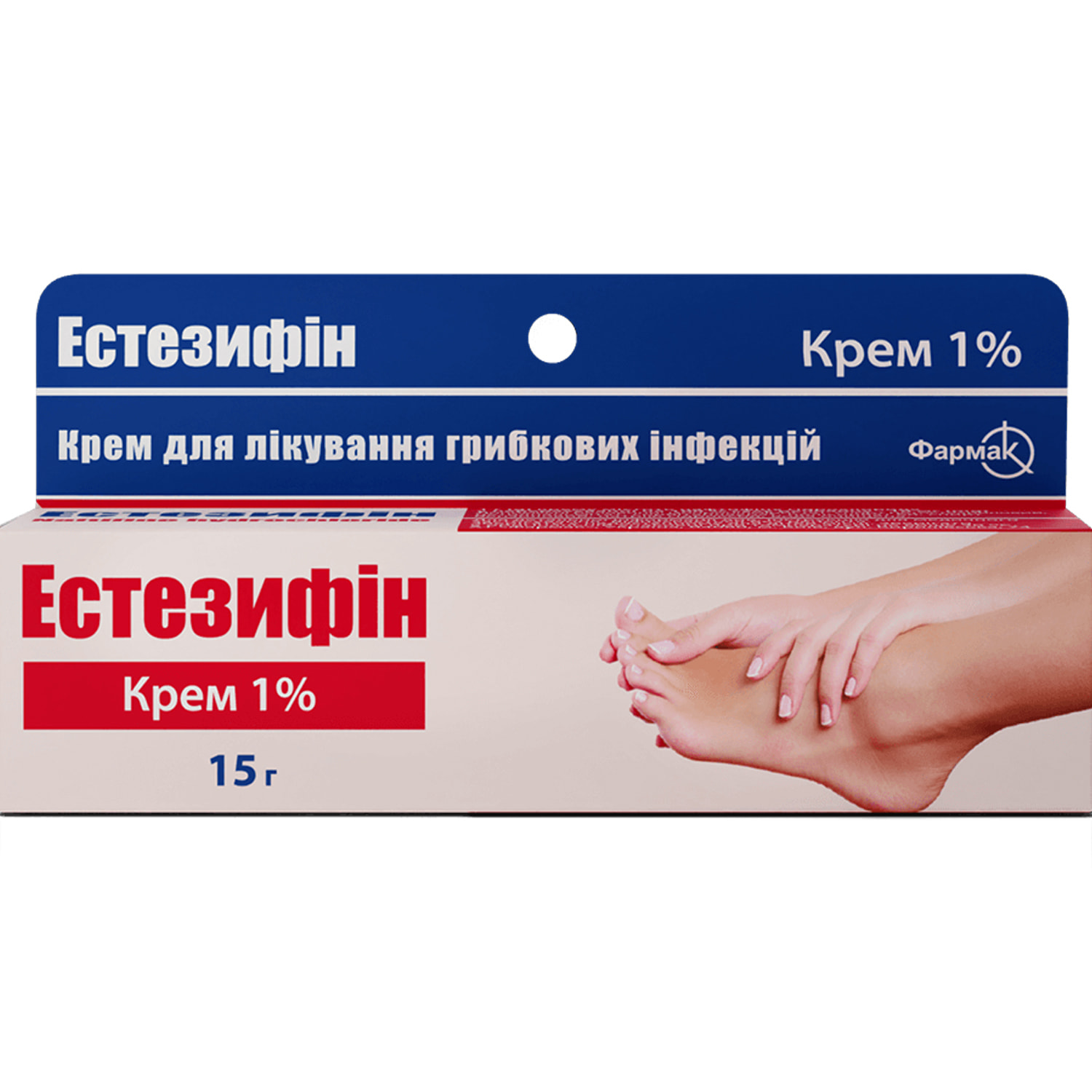
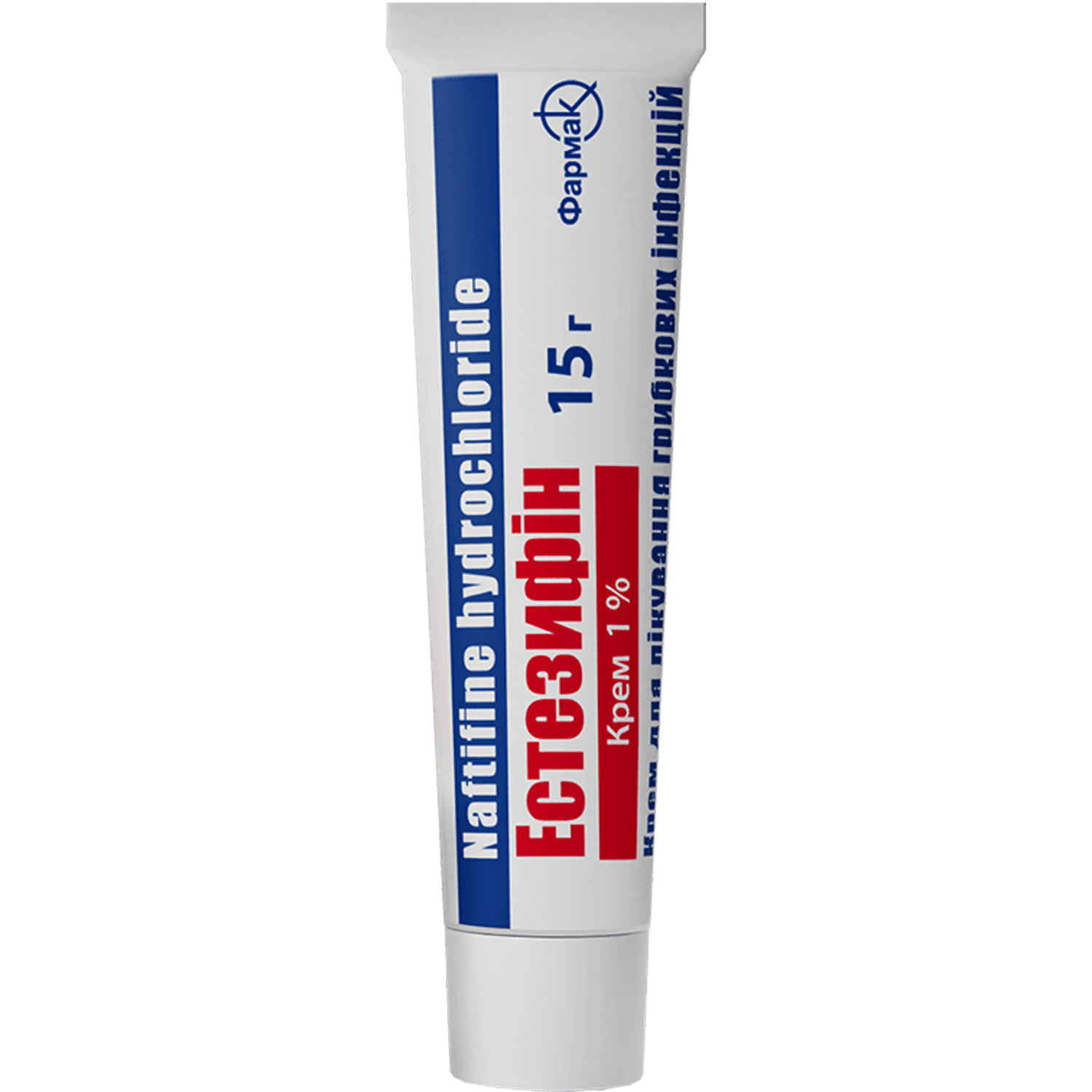

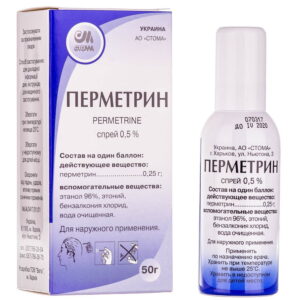
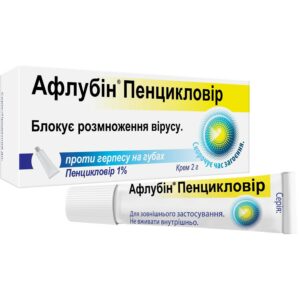
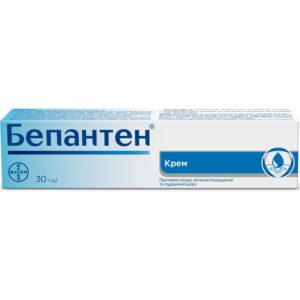
Reviews
There are no reviews yet.